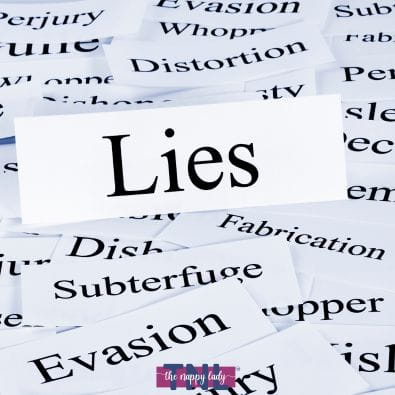Lies, Damn Lies and Statistics

"Innumeracy, the inability or unwillingness to understand basic mathematical ideas involving numbers or logic as they apply in everyday life, imposes a grave handicap on its victims. In some ways, the handicap is far graver than illiteracy. Literacy, after all, concerns a translation skill - learning to move easily between written and spoken speech. Numeracy concerns thought itself. You might exploit people’s innumeracy through an advertisement, for example, making a claim that appears to be valid but isn’t. But how would you exploit their illiteracy through an ad they can’t even read?"
(Extract from "200% of Nothing" by AK Dewdney (ISBN 0-471-14574-2) - a book about "maths abuse" which is well worth the read)
As Prime Minister in his time, Benjamin Disraeli knew all about the power of statistics to influence the public, hence his famous quote that heads this page. It’s not that the information we see and hear in adverts is wrong, but it is often selectively portrayed, making it misleading. Advertising of all sorts works on precisely this basis. What follows are a few classic examples used by disposable nappy manufacturers to show you how this works.
Pampers advertising - "Clinically proven to help prevent nappy rash"
In the 2000 advertising for Pampers Sensitive nappies and wipes (for example), the phrase "clinically proven" or "clinical tests have confirmed" is mentioned five times. Reiteration of this message is very effective on the subconscious mind, and this is a classic marketing technique. However, ask yourself these questions:
"Clinically proven" - by whom, for whom, and exactly what kind of tests were run? If these tests are independent and therefore unbiased, why not say so? Note that there is no small print about any of this information - we are just supposed to accept the term "clinically proven" without question - and it's a very easy thing for most people to do.
"...to help prevent nappy rash" - a completely meaningless statement without any kind of context. Leaving a child to go nappy-free for a period of time also helps prevent nappy rash, as does cleaning their bottoms properly when they have had a poo. Are they saying that disposable nappies rate higher than either of these methods in their ability to prevent nappy rash? By not putting it into context, they are leading people to come to this conclusion. The amount of 'help' that these nappies provide in preventing nappy rash may be almost nothing, but as long as they are not actually detrimental you can say that they help.
Huggies advertising material 2000 – "Now 40% better at preventing nappy rash"
This sounds very good until you ask yourself: 40% better than what? It could mean:
- 40% better than other disposable nappies
- 40% better than cloth nappies
- 40% better than the previous version of Huggies nappies, which seems to be the most likely interpretation.
If so, it seems remarkable that there is room for such a percentage of improvement in a product that they have already been 'improving' for many years, and which was previously marketed as providing the ultimate in skincare protection for babies.
Huggies – "57% of babies will experience some form of nappy rash every 2-3 weeks"
Source: Usage and attitude survey across Europe. Research International Huggies 1999, quoted in advertising material. By presenting regular nappy rash as the norm, this statement effectively implies that you might as well just accept it if your child gets nappy rash, because it is just what happens. I have a number of objections to this statistic.
Firstly, the lack of a published benchmark for the 57% makes it meaningless. It could be 9 people out of 16 interviewed or 9,000 out of 15,800. The smaller the sample size, the less sense a percentage-based statistic makes.
Secondly, by classing any sort of rashing in the area as 'some form of nappy rash', the true incidence of nappy rash is effectively masked. Actual nappy rash is a very specific condition, and the treatment for this is completely different than for other forms of rashing in the nappy area. Nappy rash is discussed in further detail here.
Thirdly, if this statistic does in fact bear any relation to the true incidence of nappy rash, is this at all related to the dramatic increase in the use of disposables in recent years? All I can say is: so much for the so-called protective effect of the stay dry layer.
Pampers Environmental Information leaflet – "Polymer salts (ie. sodium polyacrylate crystals) have been used in many products for many years"
The implication here is that this must mean they are perfectly safe. However, what this does NOT say is from how many of those products the crystals have since been removed for safety reasons, or whether the use in those other products bears any relation to the current use in disposable nappies. For instance, water retention granules used in gardening use something which is essentially (and may be exactly) the same as sodium polymer salts - but just because it is OK to put in the soil does not mean it is OK to put it on my baby’s bottom. I am not saying that polymer salts are necessarily unsafe, simply that the way this information is presented is inadequate to make an informed judgement.
Pampers Environmental Information leaflet – "Disposables provide a positive calorific value in incinerators"
This must surely represent the ultimate in positive spin! Here is the scenario: after many years of filling our landfill sites with non biodegradable disposable nappies, we have now been forced to move to incineration to deal with the problem of waste disposal. And Procter & Gamble now proudly report that disposables provide a positive calorific value when incinerated, so using as many disposables as you like is a GOOD THING suddenly, because we can make use of the energy!
All of this presupposes, of course, that 20 years down the line (or now, even) we are not going to find all sorts of environmental problems caused by the incinerators. See Greenpeace’s press releases on the various health risks caused by incinerators.
